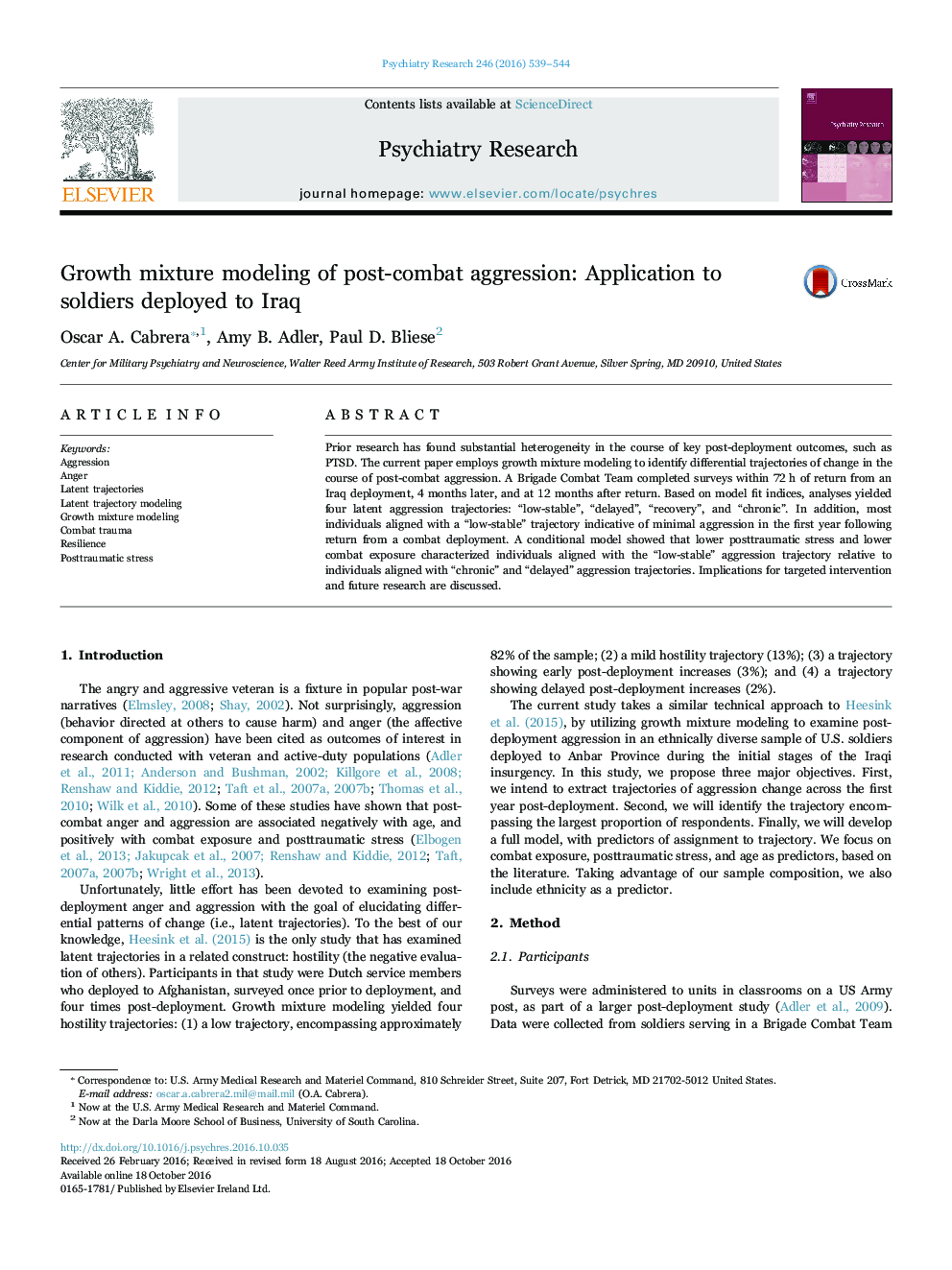| Article ID | Journal | Published Year | Pages | File Type |
|---|---|---|---|---|
| 4933831 | Psychiatry Research | 2016 | 6 Pages |
Abstract
Prior research has found substantial heterogeneity in the course of key post-deployment outcomes, such as PTSD. The current paper employs growth mixture modeling to identify differential trajectories of change in the course of post-combat aggression. A Brigade Combat Team completed surveys within 72Â h of return from an Iraq deployment, 4 months later, and at 12 months after return. Based on model fit indices, analyses yielded four latent aggression trajectories: “low-stable”, “delayed”, “recovery”, and “chronic”. In addition, most individuals aligned with a “low-stable” trajectory indicative of minimal aggression in the first year following return from a combat deployment. A conditional model showed that lower posttraumatic stress and lower combat exposure characterized individuals aligned with the “low-stable” aggression trajectory relative to individuals aligned with “chronic” and “delayed” aggression trajectories. Implications for targeted intervention and future research are discussed.
Related Topics
Life Sciences
Neuroscience
Biological Psychiatry
Authors
Oscar A. Cabrera, Amy B. Adler, Paul D. Bliese,
